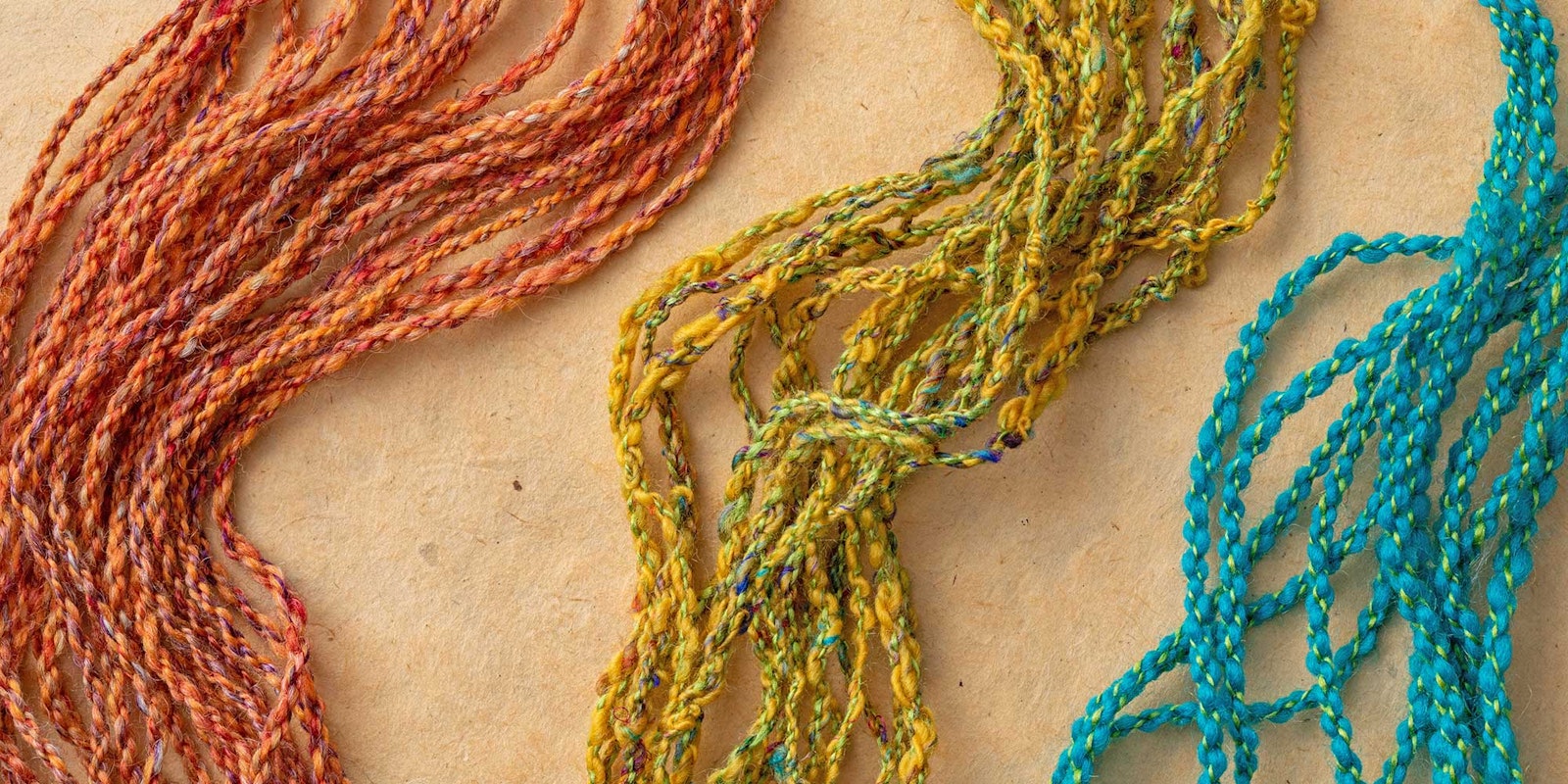For spinners, any mention of “balance” usually evokes visions of perfectly subdued skeins that hang in languid loops after wet-finishing. Their more energetic “unbalanced” counterparts might curl and twist. The reality is that spinners have varied opinions about balance and what is ideal. Tense conversations can ensue!
There are traditional examples of handspun yarns that are very low twist—such as lopi from Icleand—and very high twist—such as fine warp yarns from Peru. Both are perfectly suited to their specific purpose. However, what about all that gray area in between those two textile extremes? That’s where it can get super interesting!
What do you wish other spinners knew about balance, twist, and measurements? Do you have a project idea that makes best use of balanced or unbalanced yarns? What does finishing have to do with it?
Do you “rest” your bobbins before you ply? Do you rewind your singles? These hot topics are constant queries for many handspinners. Have you taken a close look and compared results? How are different fibers impacted by these processes? We’d love to hear about it!
Balance is such a rich concept for handspinners because it touches every aspect of our work:
Color dominance and harmonies depend not only on the palette we choose, but also on how much of each color we use. How do you decide on that “pop” color?
 The Cenote Shawl. Photo by George Boe
The Cenote Shawl. Photo by George Boe
We often want yarns that feel soft to the touch but are also strong and durable. What fibers do both? How do you make a delicate fiber stronger and a strong fiber softer to the touch? Is there a great fiber and technique you want to share? What about twist direction? Which is best?

How will these S and Z yarns work for knitting, crochet, or weaving? Photo by Kate Larson
Our tools can make or break the enjoyment we find in spinning. A well-balanced spindle is a delight, and some spindles—such as the Akha from Southeast Asia—is a mid-whorl spindle that is as fast as it is smooth. Do you have tips for balancing a wonky spindle or flyer? What is the “right” TPI (teeth per inch) for handcards?
 Akha spindles can be used as supported spindles, suspended spindles, or both. Photo by Kate Larson
Akha spindles can be used as supported spindles, suspended spindles, or both. Photo by Kate Larson
Share your article and project proposals for the Balance issue of Spin Off. We look forward to hearing from you!
—Kate Larson, editor
Submissions due: August 19, 2024
We are looking for:
- Feature articles—stories, profiles, history.
- Handspun projects—instructions using knitting, weaving, crochet, or other techniques with handspun yarn.
- How-to articles—tell us how it is done.
- Web content—if you have an idea for a shorter piece, about 300 to 500 words, please submit your proposal to us.
Have an idea that doesn’t fit our theme? Send that to us, too! We may be able to use it in an upcoming issue.
Use our convenient online submissions form to send us your article and project proposals and attach photos and sketches, too.
Forms and information:
Questions? Contact us at [email protected].
Online Submissions Form Spin Off Summer 2025
Submissions due: August 19, 2024
We will notify you of our decision: September 2024
Articles and projects due: December 2, 2024
Do you want to be added to the Spin Off Call for Submissions email list? Sign up here.

